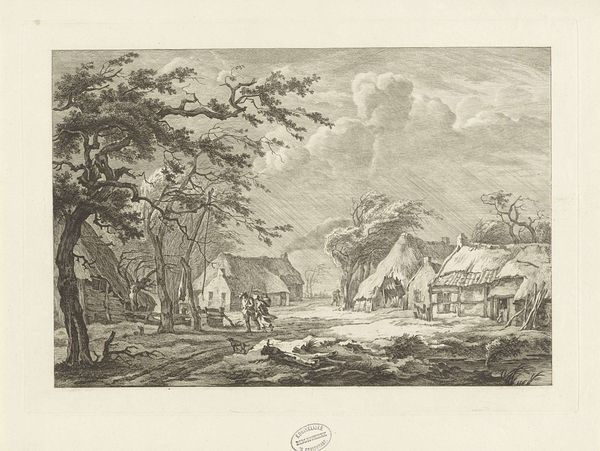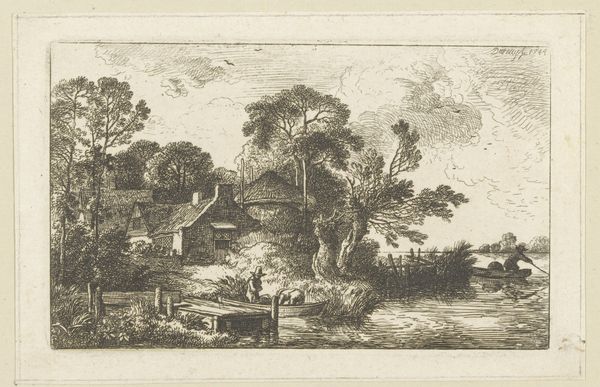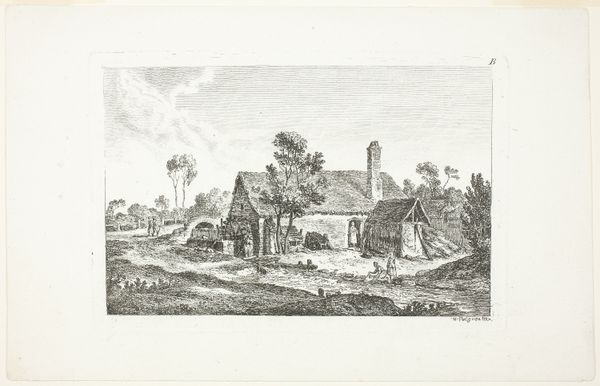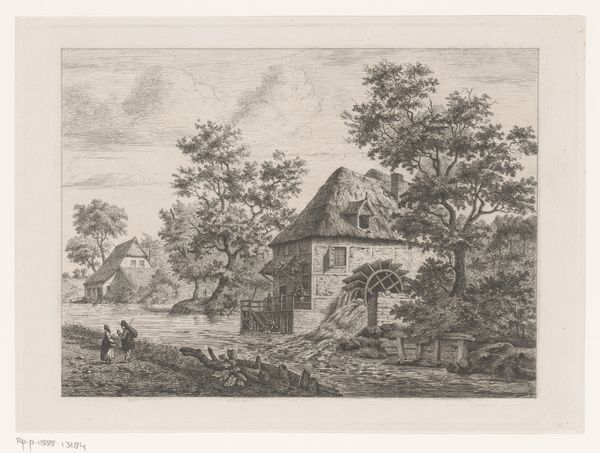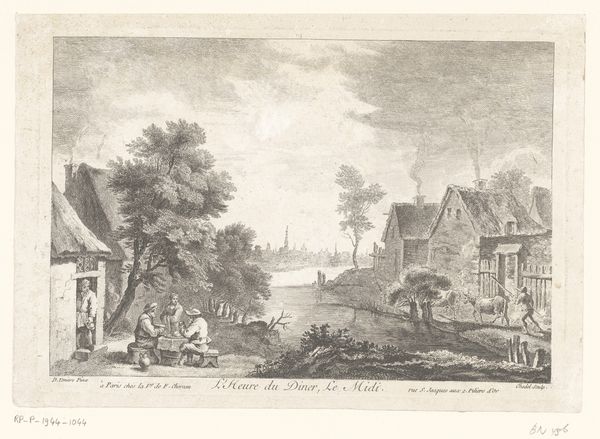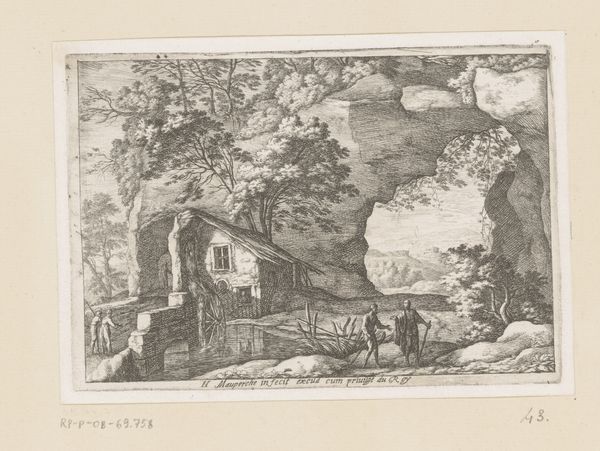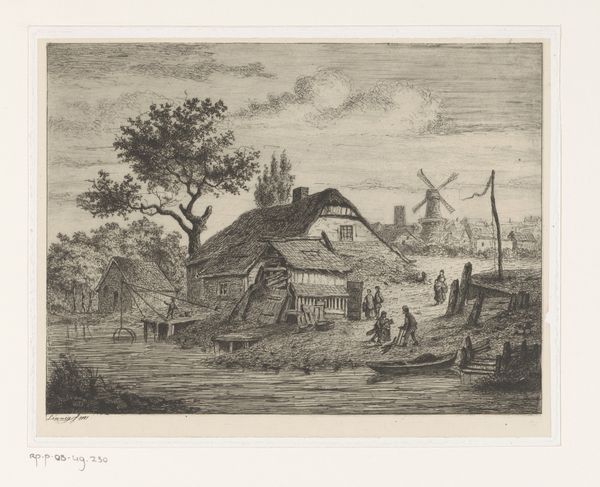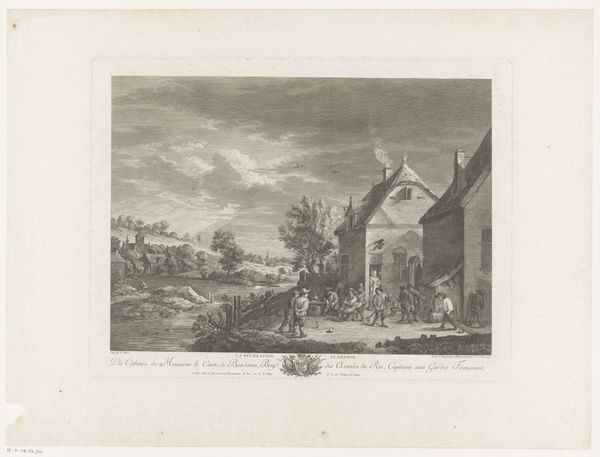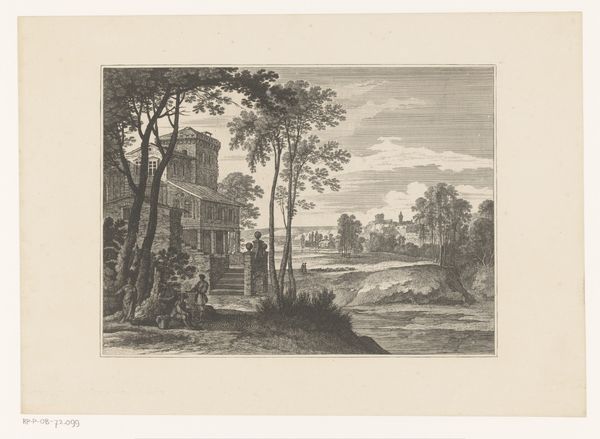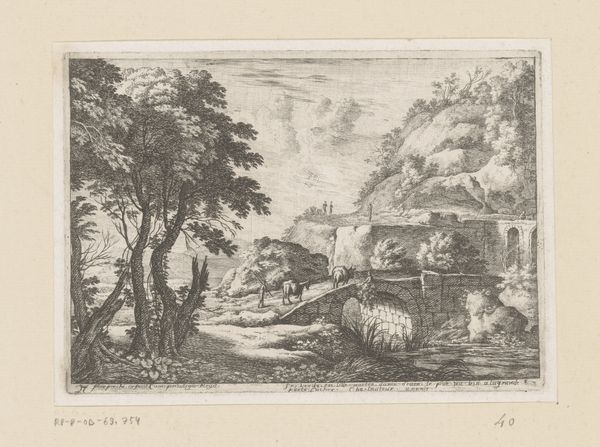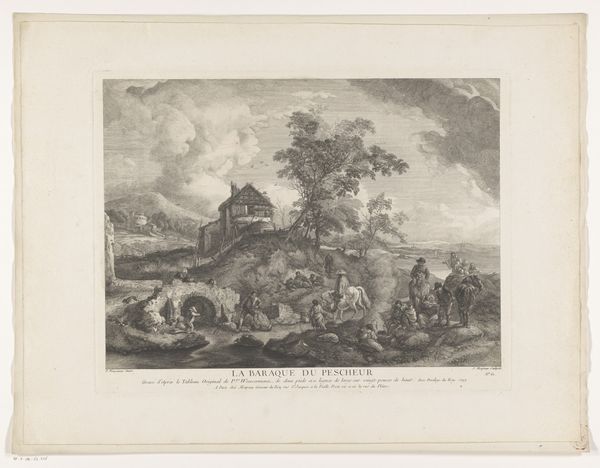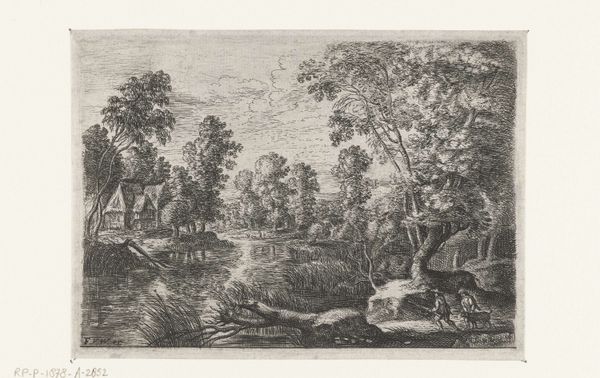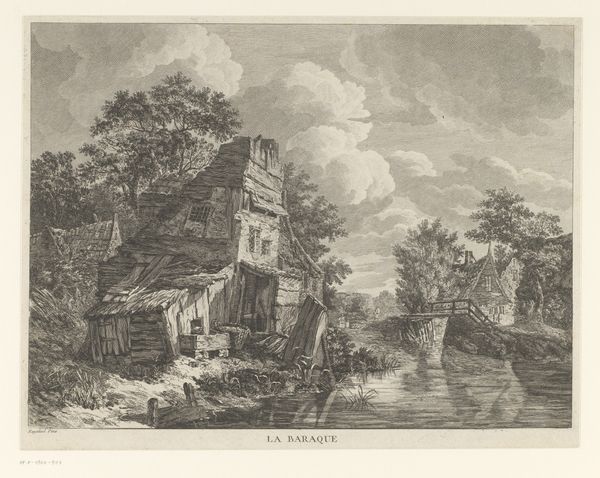
print, etching
#
baroque
# print
#
etching
#
landscape
#
river
#
cityscape
Dimensions: height 253 mm, width 374 mm
Copyright: Rijks Museum: Open Domain
Curator: Standing before us is "River Landscape with a Well," an etching by Franz Edmund Weirotter, created around 1760. It resides here at the Rijksmuseum. Editor: Ah, yes! The scene feels so calm. It's the kind of image that makes you want to escape the city for a lazy afternoon. I find the monochromatic tones surprisingly inviting. There’s a real warmth here. Curator: Weirotter was a master of landscape etching, really contributing to its popularity. His works frequently feature idealized rural scenes, capturing the spirit of the Baroque era's fascination with the pastoral. Editor: You can almost smell the damp earth and hear the gentle lapping of the water, can't you? And it does make you wonder about those little figures standing by the cottage; who are they, what stories do they hold? Curator: These types of images served an important social function back then. Urban dwellers found respite in these manufactured scenes, which in turn also promoted an idealized view of rural life and those who occupied it. Editor: Manufactured is a very good way of putting it, especially given its placement in time, a century when everything was questioned. It strikes me, too, how cleverly the artist uses the light and shadow to create depth, pulling you right into the picture. Though I do want to add there is a melancholy quality about the piece; is it simply nostalgia? Or is something more to it? Curator: Nostalgia undoubtedly played a role, feeding an escape into a picturesque past, a refuge from increasingly volatile socio-political climates. The etching also mirrors contemporary ideals concerning nature, labor, and the social hierarchy that informed them. Editor: That's fascinating. To think that this seemingly simple landscape actually held the burden of these messages. It shows how potent art can be in its reflection of prevailing sentiment. Curator: Indeed, Weirotter’s work shows the way art becomes this intersection of aesthetics, representation, and cultural values of any era. Editor: Absolutely! Well, I think I’ll walk away feeling enriched by having observed so carefully, understanding not only what it depicts, but also what that suggests more widely. Curator: Exactly! By contextualizing artworks within their historical setting, we gain invaluable perspectives into the evolution of societies.
Comments
No comments
Be the first to comment and join the conversation on the ultimate creative platform.
